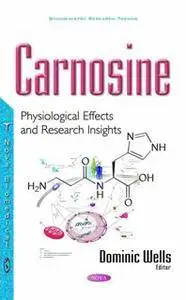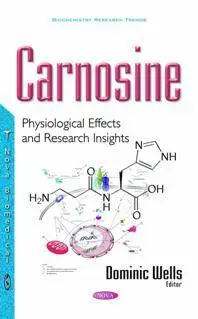Carnosine : Physiological Effects and Research Insights
by Dominic Wells
English | 2016 | ISBN: 1536101362 | 223 Pages | PDF | 3.79 MB
by Dominic Wells
English | 2016 | ISBN: 1536101362 | 223 Pages | PDF | 3.79 MB
Carnosine (b-alanyl histidine) is a water-soluble dipeptide. It is mainly distributed in the skeletal muscles and in the brain. It is widely recognized that carnosine has various functions including maintenance of the acid-base balance, antioxidant, protective chelating, and anti-glycation activity. In this book, Chapter One aims to discuss the properties of carnosine and its role in the prevention/inhibition of the oxidation processes occurring in meat and meat products, which are associated with the deterioration of their quality characteristics. Chapter Two reviews the perspective role of carnosine in tumor-related phenomena. Chapter Three reviews the possible mechanisms of neuroprotective functions of carnosine, and discusses the development of drugs for neurodegenerative diseases from food-derived carnosine. Chapter Four studies the neurotropic and protective effects of L-carnosine. Chapter Five focuses on the protective effects of carnosine and its derivative trolox-carnosine against inflammation and oxidative stress in experimental arthritis, carrageenan induced hind paw edema, chondrocytes under H2O2 injury and degradation of hyaluronan.



